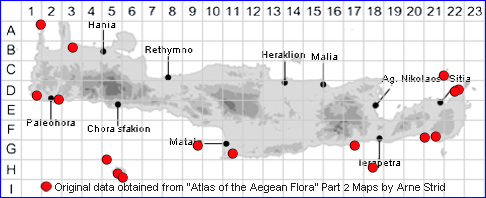
SPECIES DESCRIPTION
LIMONIUM ECHIOIDES
Family and Genus:- See- PLUMBAGINACEAE
Common Names:- None
Homotypic Synonyms:- Statice echioides, Taxanthema echioides.
Meaning:- Limonium (Gr) Meadow-plant. A name used by the Greek physician
and botanist Dioscorides.
Echioides (L) Resembling echium.
General description:- Annual with slender taproot.
Stems:-
1) Slender, moderately branched, with the cauline leaves reduced to ± scarious
scales.
Leaves:-
1) Usually 2-5 cm.
2) Basal, in a flat rosette, narrowly obovate to spathulate-oblanceolate, obtuse,
rather thin. dark green, glaucous or reddish. often glandular-tuberculate.
Flowers:-
1) Inflorescence, with long, lax spikes of 1- or 2-flowered spikelets.
2) Inner bracts, tuberculate, strongly involute.
3) Calyx teeth, of the midrib extended into an uncinate awn.
4) Corolla, pink or pale lilac.
Habitat:- Sandy and rocky maritime habitats, occasionally along roads and in dry
open shrubby vegetation some distance inland up to 300 m.
Distribution:- In Greece almost restricted to the Aegean area. - Widespread in the
Mediterranean region from S France to Cyprus. Sparsely scattered on Crete.
Flowering time:- April-June.
Photos by:- Christopher Cheiladakis
